Poetry Friday: Childhood Favourites
It’s Poetry Friday and, in the midst of writing and talking and thinking about my new book baby, I’ve also been thinking about the poems that lead me to love poetry. I spent a lovely afternoon rediscovering my favourite childhood collection, and decided to share a few, and why they appealed to me.
You can find each of these poems, which are in the public domain, online:
The Purple Cow, by Gellet Burgess
Eletelephony (which I am sure I mispronounce in the video) by Laura Elizabeth Richards and
Forgiven, by A. A. Milne
There are so many more wonderful poems in this treasured collection that I would have loved to share, and perhaps will in future. There is something warm and comforting about poems from childhood. It isn’t just the words or the rhythms, it’s the physical sensation of the memories they invoke.
What poems do you remember loving as a child that have stayed with you?
And, speaking of warm and comforting, there are choc chip cookies on offer at Jama’s blog, where she’s hosting the the Poetry Friday roundup, with find links to loads more poetry goodies.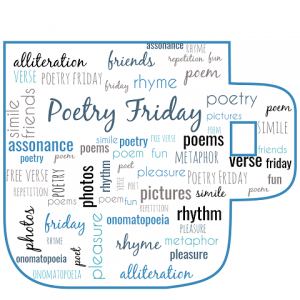
Worse Things: The Cover Story
As part of recent Readalong, I reflected about each of the covers of my three previous verse novels: Pearl Verses the World had had two different covers, and two different titles, for different editions; Toppling had had three covers and two titles, and Roses are Blue just the one cover. Additionally, there was branding. As you can see from the three Australian covers, whilst there’s not a series, the cover design links them to me, the author,and to the style of the book, all verse novels.
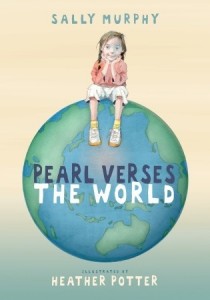
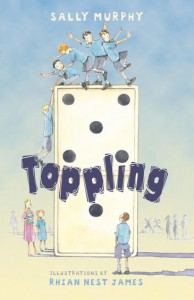
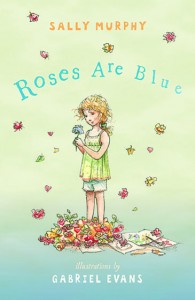
I have always loved these covers, and the branding part was exciting to me, because it felt like the brand was ‘Sally Murphy’ – even though of course there is a lot more to it than that. I felt that the cover design was a perfect match for the illustration style and for the form and content of the books. And feedback from readers young and old matched that. My post about the Pearl Verses the World cover, especially, drew dozens of comments here and on Facebook and Instagram.
However, the cover of my fourth verse novel, Worse Things is different. Very different.
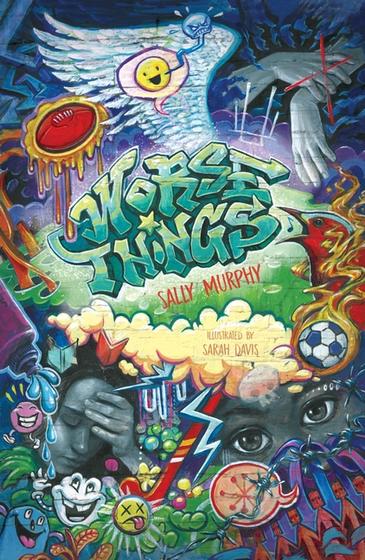
Everything is different – the colour pallet, the font, the and the illustration style, too. The illustrations take up the whole cover, with the title part of the illustration. But guess what? I love it just as much as I loved those other covers. Why? Because I think it’s perfect for this book. And I think Sarah Davis is a genius.
Although still a verse novel, and having some similarities in style and even themes, Worse Things is a bit of a break away from the earlier ones. The age of the characters is slightly older than the characters in the earlier books, meaning it is likely to be enjoyed by slightly older readers – although I think readers who enjoy the first three will also connect with the fourth, and vice-versa.
Worse Things is also a multi voice novel, with three characters telling the story, and I love the way Sarah has captured key elements of each character’s life and their story, and used them on the cover. Readers will hopefully come back, after they’ve read the book, and be able to see why those images are there.
I’d love to hear what you think about this new cover. If you haven’t read the book, what do you think is suggested by the images? You can comment here, or on Instagram or Facebook.
And, if you’d like to get better acquainted with the cover, I turned it into a digital puzzle for you to have a go at! You’ll find that here.
Poetry Friday: Definition Poems
Welcome to Poetry Friday. What a week this past week has been! I have to admit that I was very worried about releasing a new book in the midst of this terrible pandemic. Why, I thought, would anyone be interested in my little book in the midst of such awful stuff happening. But the love I’ve felt – for my book, and for me, too – has really made me remember that people need good stuff to celebrate in the midst of bad times just as much as they in the midst of good times, or even in-between times. So thank you for your well wishes, your support, and best of all your enjoyment of my videos and ramblings and sharings.
Last week, as part of my release day post, I shared a poem which I term a ‘definition poem’. It isn’t an existing form – just something I played with as I wrote Worse Things. Here’s the one I shared:
BROKEN
[bro*ken] (adj)
Ruptured
torn
fragmented.
No longer whole
or functioning.
In need of repair.
(Copyright Sally Murphy, 2020)
And here’s another:
BELONG
[be*long](Verb)
To be part of
Appropriately placed
A piece of the whole.
To fit in
Match up
Meet up.
Appertain
Associate
Apply.
To be apt.
(Copyright Sally Murphy, 2020)
If you want to see what these look like in the book (and don’t have a copy at hand) you can see the spreads in this video, which was put together for the Walker Books website. Broken appears at 0.47 and Belong at 1.24.
I had a lot of fun writing these definition poems. First I identified key words or themes that I was exploring at different points of the book. Then I got out my dictionaries and thesauruses and looked at the definitions and similes. Then I simply played with the words and phrases, perhaps adding new phrases, until I had a poem that I felt both defined the word and also connected with what was happening in the text.
Since I finished writing Worse Things I haven’t played with the form again, but this week I thought I might give it another go, inspired by things seen on my daily beach walks. First there’s this one, inspired not just by the gorgeous Flo, but by all the pups I watch on my walks (including the recently departed Skipper, who is sadly missed).
Here’s what I came up with.

DOG
[dog] (noun)
Mutt
Pup
Pooch.
Tale-wagger
Stick chaser
Guide
Guard
Shadow
Man’s best friend
[Edited to add: yes, I do know dogs’ tails are spelled that way. The misspelling is a deliberate play on words!]
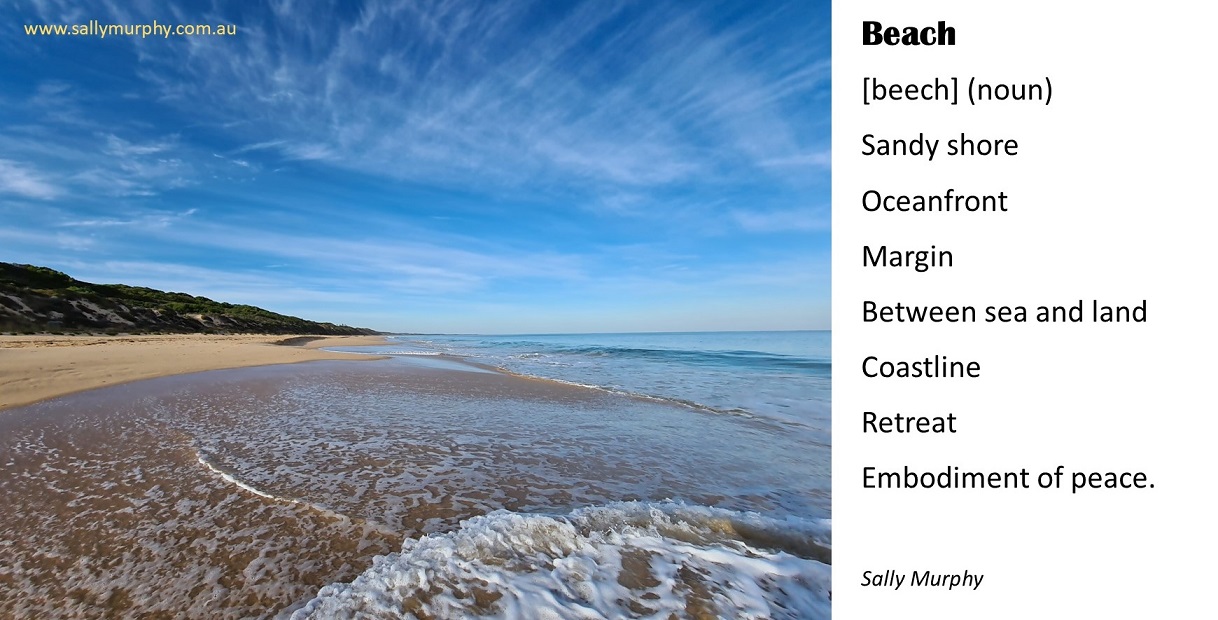
Beach
[beech] (noun)
Sandy shore
Oceanfront
Margin
Between sea and land
Coastline
Retreat
Embodiment of peace.
You might be able to pick the couple of lines that did not come from either dictionary or thesaurus. I especially found the definitions for beach a little inadequate for just how much it means to me.
So, over to you. I’d love to see if you have a word you’d like to define poetically? I like to think it’s a fairly simple challenge,because the dictionary and thesaurus are a wonderful starting point for finding lots of fodder.
Not up for the challenge? That’s okay. There’s all sorts of other poetry goodness on offer around the interweb, courtesy of my Poetry Friday friends. You’ll find the roundup over on Michelle’s blog, Today’s Little Ditty. See you there.
Worse Things: The Story Behind the Book Continues
Yesterday (you can see the post here) I talked about the background to Worse Things – from the initial selection of a theme and a topic, to the idea to have two viewpoint characters, who soon morphed into three. I touched on having tried to use three points of view (first second and third). The idea initially was that my two characters would be aware of each other but not really interact directly – and so when one was watching the other, they would refer to them as ‘you’. From there grew the idea that this watcher could be a third character. The idea to use first and third person for the two initial characters – who became Blake and Jolene – did not last long into the first draft. I have always written my verse novels in first person ‘I’ and I just couldn’t convince Jolene to let me tell her story as on observer (she/they). It became apparent that she wanted to speak for herself. So I had two first person characters.
The third character, Amed, let me persist with something akin to second person. Initially he was a watcher, observing the other characters and talking about what he saw. He was nameless, to the reader, and this, I hoped, would reflect the fact that the others ignored him, but that he was really a wise observer, in spite of his language difficulties. However, tow problems emerged. Although Amed was talking about ‘you’ (meaning either Blake or Jolene, whoever he was watching), I also wanted to gradually reveal his own story. I needed him to tell us his own thoughts and experiences. And so, he became another first person narrator – although he does still use second person to talk (in his head) to each of the other characters, as in his opening poem, which begins “You can’t see me watching you…” Getting Amed’s voice right was the most challenging – initially he was doing a lot of watching and not enough of anything else, and he came across as a bit too stalkerish.
Finally, though, I had the three voices, and the three sports and I managed to get going on bringing their stories to life. Although this process was more convoluted than my earlier verse novels, what was similar in my writing process was that I really didn’t know their full stories until I started writing. Each character’s story unfolded as I wrote. Parts of the story appeared before others, so it wasn’t written as sequentially as the others either. It felt a little more of a jigsaw puzzle – piecing together the different poems, the different storylines until it gradually came together.
The other thing that happened along the way was that I realised that my plan to write something less emotionally challenging had failed. Without giving two much away, some pretty tough stuff happens in this book. And I balked at some of it. I tried to convince my characters that they didn’t need all of that stuff happening – but they were insistent. It seems I never win these battles with my characters but, looking back, I know they are always right, and that in spite of the emotional toll, I like finding a way to tell such stories.
I had feedback of various drafts and parts of drafts from my doctoral supervisors and, when I was happy with it, I put it aside to work on other aspects of my thesis. This in part explains the six years it took to get to publication. But there was also, in that six years, quite a bit of toing and froing with the publisher, to get it right for them. In the end, I had to set aside trying to get it published, and complete the thesis, because the demands of a doctoral thesis, even in creative writing, and the demands of commercial publication, are different and often competing.
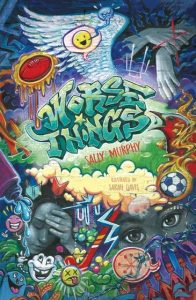 Finally, though, I finished the PhD and passed (I even got to wear a floppy hat to graduate) and then I could attend once more to trying to get Worse Things published. To cut a long story short, eventually Walker Books decided the time was right, and the manuscript was right, and said yes. Then Sarah Davis read it, and set to work illustrating and designing that amazing character. And now, here it is, out in the world, ready for you (and you – and you too) to read.
Finally, though, I finished the PhD and passed (I even got to wear a floppy hat to graduate) and then I could attend once more to trying to get Worse Things published. To cut a long story short, eventually Walker Books decided the time was right, and the manuscript was right, and said yes. Then Sarah Davis read it, and set to work illustrating and designing that amazing character. And now, here it is, out in the world, ready for you (and you – and you too) to read.
Worse Things: The Story Behind the Book
Wow. What a reaction! Thank you so much to everyone who has joined with me here on my blog, on Facebook, Instagram, Twitter and, of course, in real life, to celebrate the release of Worse Things. I still hope to hold a ‘real’ launch at some point, but I have certainly felt the love for my new book baby in its first few days out in the world.
Today I thought I’d share a little about the story behind the book, as I did with Pearl Verses the World, 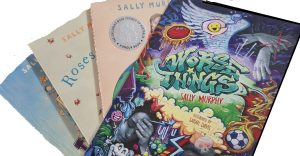 Toppling and Roses are Blue over the last few weeks. When Roses are Blue was published, back in 2014, I had little idea it would take another six years before my next verse novel was published. In fact, I’d already started work on Worse Things by then.
Toppling and Roses are Blue over the last few weeks. When Roses are Blue was published, back in 2014, I had little idea it would take another six years before my next verse novel was published. In fact, I’d already started work on Worse Things by then.
When I started planning Worse Things I knew that I wanted to write something that stood apart from the first three. I wanted to challenge myself to do something a bit different. One reason for this was the emotional toll writing on such serious topics took on me each time, but another reason as that I enrolled in a Doctoral program at university, and this verse novel was going to part of my doctorate. So I wanted it to take me on a learning journey. And oh boy it did.
The topic of my doctoral thesis was Belonging – both as a theme within children’s poetry, as well as where poetry belonged. As well as writing some chapters about these topics, I also decided to write a series of creative works – a collection of poems for young children, a second collection for middle primary aged children, and a verse novel, for middle grade readers. The collections would be linked by the theme of belonging.
So, I had a theme, which is not where I would usually start my story. But I also had an idea for a story I’d been toying with for quite a while: a sport story. I’ve always loved sport – in my younger days I played (not all at the same time): tennis, basketball, hockey, squash, netball, swimming and gymnastics as well as, at school, all kinds of sports including cross country running, athletics, teeball, softball, soccer, badminton and more. These days I still swim, including competing in some open water swimming. My six kids, too, played a lot of sport, including most of those I’ve listed, as well as AFL (footy), rugby, cricket and volleyball. I’ve probably forgotten a few. The result of all this sporting love is that I have spent a lot of time either playing or watching sport – and that’s not to mention the professional sports I love watching.
One football season my youngest two sons had a really interesting time: one son broke his thumb (the same thumb!) twice in the same season (and then again 18 months later) and the other dislocated his shoulder playing footy in the school playground. As a result they both missed most of the season. But I was the team manager for one of their teams, and on the club committee, and then the boys took up umpiring, which they could still do while injured – and I spent just as much time on the sidelines that year as I would have if they’d played. Maybe more. And a lot of time at medical and physiotherapy appointments.
One night over dinner I randomly suggested I should write a footy story. I never write about my own kids but, on this occasion, they reacted enthusiastically, and started chipping in ideas, mostly drawn from their own experiences. I very quickly realised that I couldn’t use most of these experiences – because they involved other people, especially the ones from their umpiring experiences. I did not want to be sued by some of the parents involved! But I did know that both injury and umpiring could form part of a story.
It was only when I started my doctorate though, that I realised that sport and belonging had a lot in common because team sports can really build a sense of being part of something. Conversely, they can also make you feel left out ( I have a really vivid memory of being about 8 and being part of a basketball team where I was left on the sideline for three quarters of the game because I wasn’t good enough. It was a parent on the sideline who told the coach, in my hearing, not to put me on the court!)
So, from these two things – football experiences, and the theme I’d chosen, that a story started to emerge. The choice to use multiple sports and voices grew from there, and from my desire to explore different people’s experiences.
Initially, however, I only planned two characters – Blake, the footy boy – and Jolene the hockey girl. But I had this idea to experiment with point of view – I wanted to write one character using first person (I), and the other using third person ‘they’ – and then play around with second person, with one or both of them observing the other. This third voice very quickly became a character of his own, revealing himself as Amed, the soccer boy. And although the first, second, third person idea ended up on the scrap heap early on, the exploration of three separate but overlapping stories is what developed into Worse Things.
(To be continued in tomorrow’s post)
- « Previous Page
- 1
- …
- 30
- 31
- 32
- 33
- 34
- …
- 197
- Next Page »